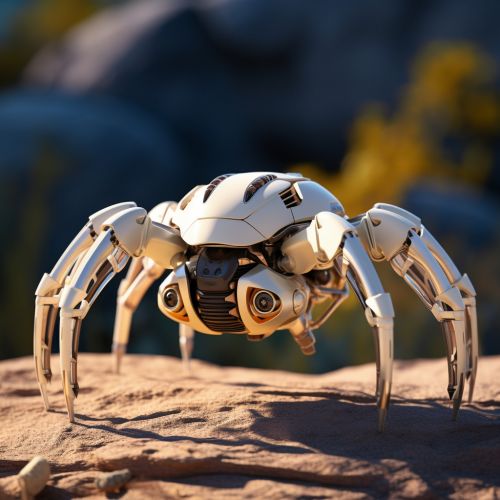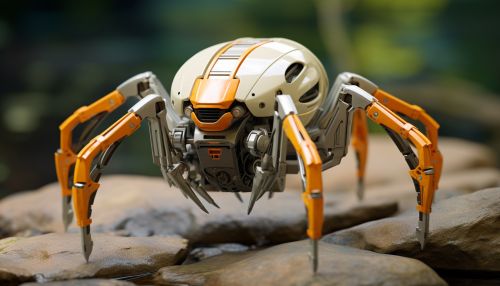Bioinspired Robotic Systems and Locomotion
Introduction
Bioinspired robotic systems and locomotion draw inspiration from the natural world, mimicking biological mechanisms to improve the efficiency, adaptability, and versatility of robots. This field of study is a subset of biomimetics, which broadly encompasses the imitation of models, systems, and elements of nature for the purpose of solving complex human problems.
Bioinspired Robotic Systems
Bioinspired robotic systems are designed based on the principles observed in biological systems. These principles can be structural, like the physical form of a robot, or functional, such as the robot's control mechanisms. The goal is to create robots that can perform tasks more efficiently, adapt to changing environments, and exhibit behaviors similar to those seen in nature.


Structural Bioinspiration
Structural bioinspiration involves the design of robotic systems that mimic the physical form of biological organisms. This can range from simple shapes, such as the streamlined bodies of fish-like underwater robots, to complex structures like the multi-segmented bodies of insect-inspired robots. The goal is to create robots that can move and interact with their environment in ways similar to their biological counterparts.
Functional Bioinspiration
Functional bioinspiration focuses on the control mechanisms of robots. This can involve mimicking the sensory systems, neural networks, and control algorithms used by biological organisms. For example, bat-inspired robots might use echolocation to navigate, while ant-inspired robots might use pheromone trails to coordinate their actions.
Bioinspired Locomotion
Bioinspired locomotion refers to the design of robotic movement mechanisms that mimic those found in nature. This can involve the study of walking, running, jumping, flying, swimming, and other forms of locomotion. The goal is to create robots that can move efficiently and adaptively in a variety of environments.
Terrestrial Locomotion
Terrestrial locomotion involves movement on land. This can involve walking, running, jumping, and other forms of movement. For example, spider-inspired robots might use multiple legs to traverse uneven terrain, while kangaroo-inspired robots might use jumping to move quickly over large distances.
Aerial Locomotion
Aerial locomotion involves movement in the air. This can involve flapping, gliding, and other forms of flight. For example, bird-inspired robots might use flapping wings to fly, while dragonfly-inspired robots might use hovering to remain stationary in the air.
Aquatic Locomotion
Aquatic locomotion involves movement in water. This can involve swimming, diving, and other forms of underwater movement. For example, fish-inspired robots might use undulating bodies to swim, while octopus-inspired robots might use jet propulsion to move quickly underwater.
Applications of Bioinspired Robotic Systems and Locomotion
Bioinspired robotic systems and locomotion have a wide range of applications, from exploration and surveillance to healthcare and entertainment.
Exploration and Surveillance
Bioinspired robots can be used for exploration and surveillance in environments that are difficult or dangerous for humans to navigate. For example, ant-inspired robots can be used to explore underground tunnels, while bird-inspired robots can be used for aerial surveillance.
Healthcare
In healthcare, bioinspired robots can be used for tasks such as surgery and rehabilitation. For example, snake-inspired robots can be used for minimally invasive surgery, while insect-inspired robots can be used for gait rehabilitation.
Entertainment
In the entertainment industry, bioinspired robots can be used for performances and interactive exhibits. For example, bird-inspired robots can be used for aerial performances, while fish-inspired robots can be used for underwater exhibits.
